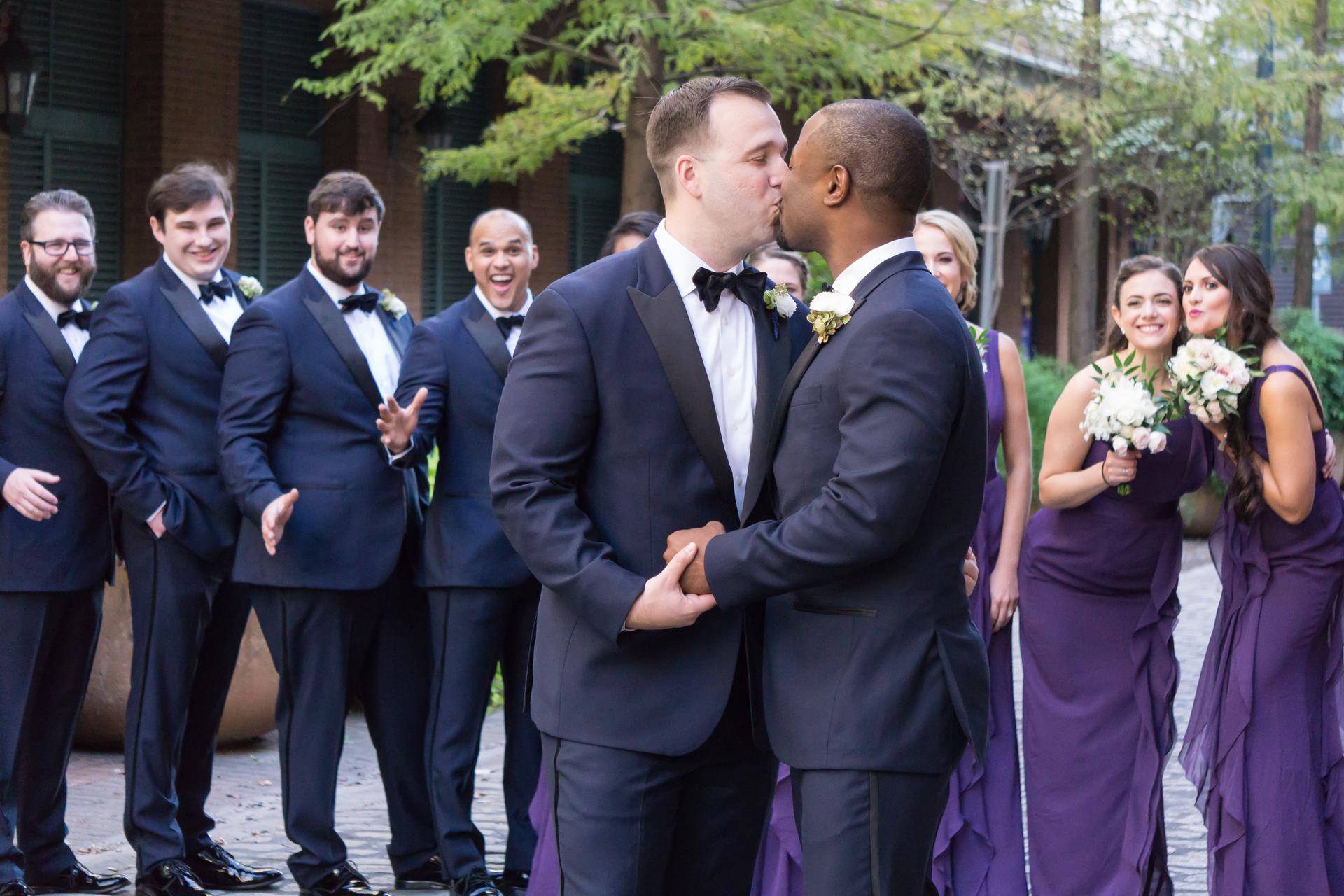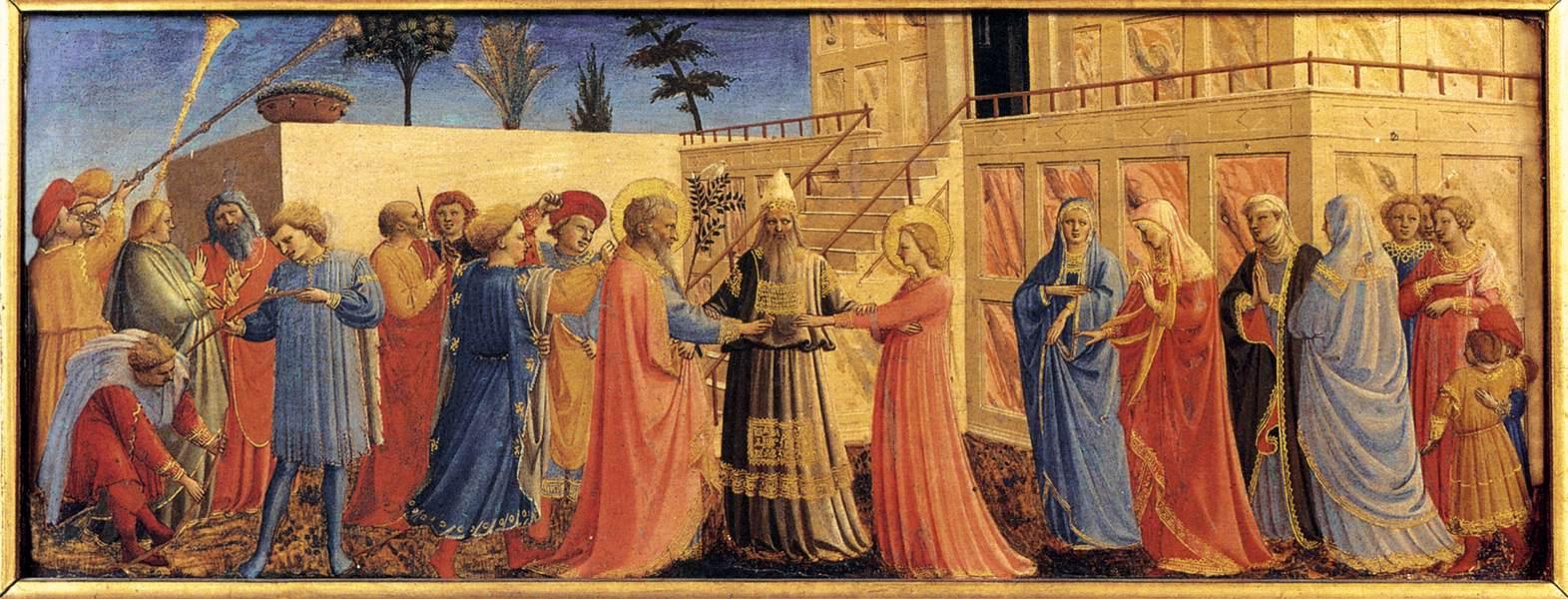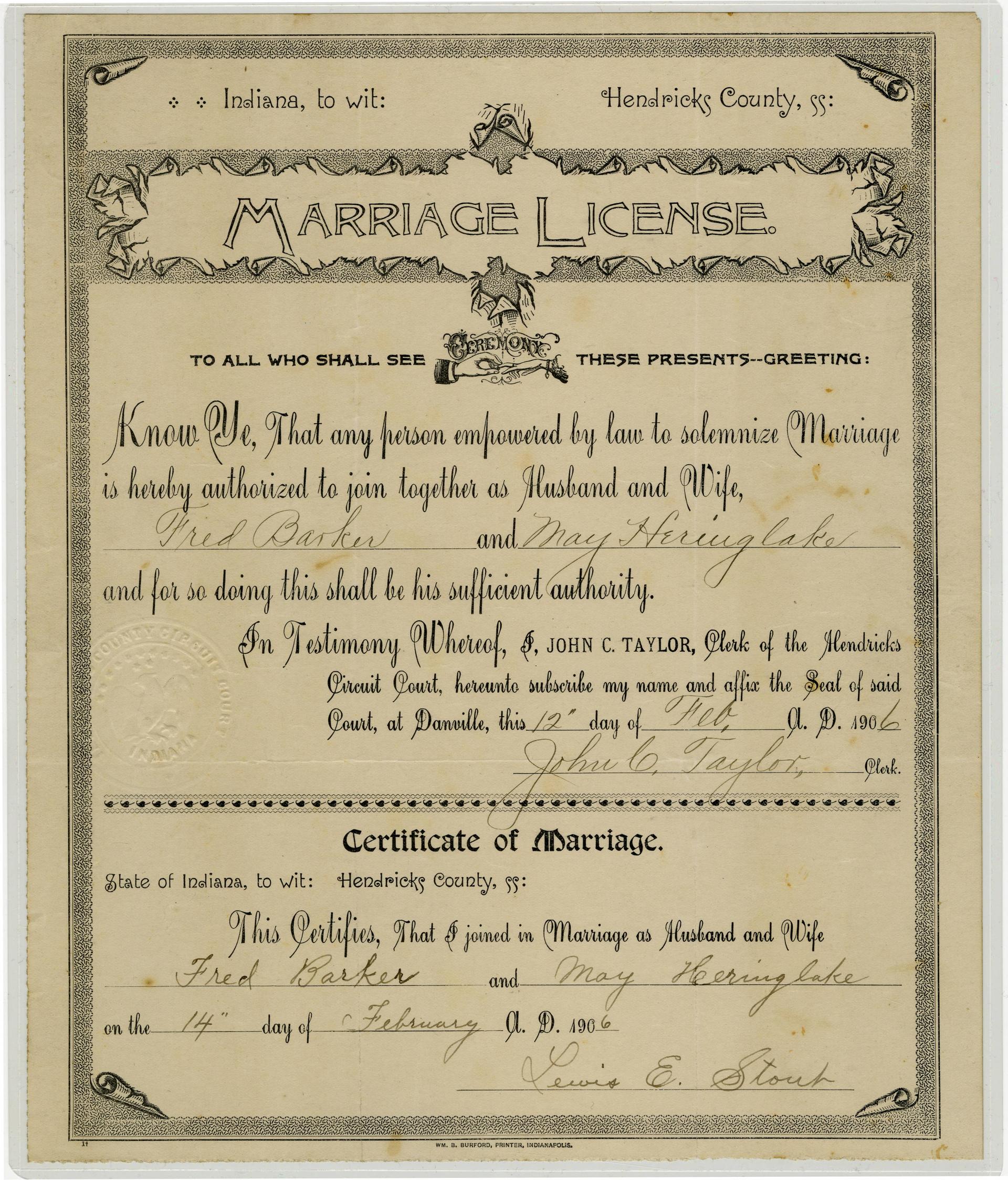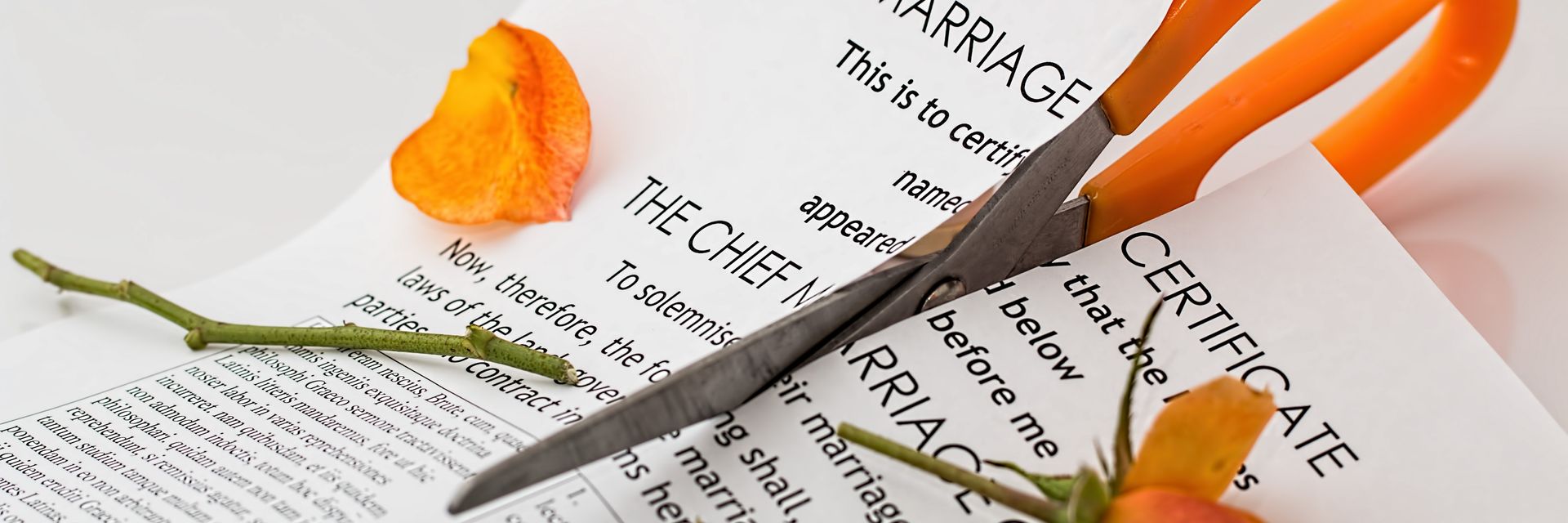Love and marriage are often thought to go together like…a horse and carriage. At least, that’s the story we’ve been telling ourselves for ages.
◊
Once upon a time, a princess sat by the edge of a pond, weeping. None of the princes from nearby kingdoms would marry her. In fairness to them, everyone agreed she was ugly – so ugly, she made the forest trolls feel sorry for her. “No one will have me,” she sobbed, “and my insurance doesn’t cover plastic surgery, and there aren’t any apps powerful enough to gloss over my imperfections, so I can’t even fake it on Insta!”
Suddenly, she heard a voice ask, “Why so sad, Princess?” An enormous frog sat on a rock in the middle of the pond. “Haven’t you heard a new prince has moved into town? And he has this thing with his eyes – he can’t see anything superficial, which is good for you. Really good.”
So, the princess contrived to meet the prince, the two fell in love, got married, the princess became Mrs. Prince, had two children, and lived happily ever after. The end.
The Laws that Govern ‘I Do’
Umm, okay, it’s not quite the standard fairy tale, but fairy-ish enough. Around the globe, girls are raised in traditions that make marriage the major goal of life. Consider, for example, the global wedding dress market, which is estimated to reach over $72 billion – billion – by 2027. The global wedding rings market is on the rise, and projected to be at least $120 billion by 2031. In the U.S. and Canada alone, the engagement ring market was worth almost $40 billion in 2019. There’s an entire industry devoted to weddings, from planning to The Big Day.
For a different view of sex, love, and romance, check out The Surprising History of Sex and Love on MagellanTV.
The numbers tell us something important about what we value (or are expected to value). Consider, for example, the fact that qualifications for marriage consistently fuel some of the U.S.’s fiery culture wars. From Loving v. Virginia, the 1967 landmark case that struck down anti-miscegenation laws that forbade interracial marriage, to Obergefell v. Hodges, the 2015 landmark case that requires states to recognize same-sex marriage, disagreements rage over who gets to participate in the institution – but not the institution itself.
People in the U.S. are putting off marriage longer, and rates have fluctuated since 1900, but plenty of people still get married.
Regardless of our shifting attitudes about who can marry whom, the practice of marriage itself continues to be the gold standard of what counts as a “real” relationship. Consider California’s marriage laws. Pre-Obergefell, California recognized three legitimate types of relationship: Civil or common law marriage between one man and one woman, and domestic partnerships constituted by same-sex couples or by opposite sex couples consisting of at least one partner 62 or older.

Two men marry, surrounded by wedding party, in New Orleans, LA, on November 11, 2017. (Source: Wikimedia)
The fact that both common law and civil marriage were restricted to opposite sex couples tells us something about how the law reflected religious attitudes about marriage. Another way to put it is that legal marriage was – and is – rooted in religious beliefs and practices. In the Abrahamic traditions (Judaism, Christianity, and Islam), for example, marriage historically recognizes opposite sex unions exclusively.
So much for the separation of church and state? A bit of analysis yields some evidence that civil marriage is merely a religious practice anointed with legal status, and so reflective of traditional (and current) attitudes about the value of this supposedly venerable institution.
California’s original statute establishing legal domestic partnership was intended to grant rights and privileges to same-sex couples excluded from marriage, but it did not recognize opposite-sex couples, unless at least one was age 62 or older. The state maintained that since opposite-sex couples could get married – that was the default and the apparent expectation – there was no reason for them to register as domestic partners. That meant that opposite sex couples who did not want to get married were excluded from the legal protections and responsibilities marriage afforded, such as being named a family member at a dying partner’s bedside.
The carveout for older opposite-sex couples was chalked up to the power of the AARP lobby – lots of older people wanted the protections of marriage without being forced to hobble through the legal hoops.
Marriage is the traditional go-to for a socially acceptable relationship, and is still largely the legal standard for rights and responsibilities. When California changed its domestic partnership law in 2015 to allow opposite-sex couples to register as domestic partners, unmarried opposite-sex couples ceased to be legal ghosts living in a sort of relationship no-man’s land. This move highlights at least some of our inconsistent thinking on what marriage means.
My Better Half: Marriage and Ownership
Influenced as we are by tradition, we typically don’t think much about practices like a father walking a bride down the aisle to “give her away” to the groom, or the way in which marriage has signified not just social acceptability (no spinsters here!) but also ownership and its misogynistic history. In the Western tradition, Miss, Señorita, or Mademoiselle, for example, becomes a Mrs., Señora, or Madame, respectively. No such distinction exists for men.
There was a time, roughly from the 1970s through the 1990s, when married women chose to retain their maiden names or generate a hyphenate, and even some men adopted the practice, joining their surname with their wives’. In more recent years, though, there has been a regression, which is on a path toward a practice the U.S. adopted from English common law: Coverture. Literally, “covered by,” coverture subsumed a woman’s legal identity under her husband’s. Though only a nominal version, taking one’s husband’s name is a vestige of the more comprehensive annihilation of a woman’s identity. (My mother still gets mail addressed to “Mrs. Gene Wood,” her name and identity entirely swallowed by title, and so by legal authority.)
According to Oxfam International, the unpaid care work performed largely by women all over the world “would be worth nearly $11 trillion US dollars a year.”
There was also a time, not so long ago, that a woman could not enter contracts, own or inherit property, or run a business – in short, outside of marriage, women were dependent upon their fathers or other male relatives. Inside marriage, women were dependent on their husbands; marriage was surely a mechanism of control. It was not until 1993, for example, that all 50 states abolished the marital rape exemption – in other words, until 1993, some U.S. states did not acknowledge that a woman could be raped by her husband. Even now, when women around the world have made strides toward autonomy, old yokes still hang heavy around their necks.
Marriage Rituals and Ceremonies
This brings us back to the codification of religious practices, at least in the Abrahamic tradition. Since English settlers arrived in New England, much of our early Common Law followed the puritan version of Christian practice. Early marriage practice in the United States reflected a female-to-male property transition, based upon the Christian concept of uniting the flesh, so that two people became legally one: the man. As an economic arrangement, marriage is a powerful and effective tool of what we now call “social engineering.”
 Fra Angelico’s “Marriage of the Virgin” (Source: Wikimedia Commons)
Fra Angelico’s “Marriage of the Virgin” (Source: Wikimedia Commons)
All of this and more has been absorbed into our collective consciousness and regurgitated as love and romance – and the paradigmatic and inexorable expression is marriage. Rituals, ceremonies, and other practices serve to explain what we are to ourselves, even when aspects of said activities are arguably absurd.
License to Love: The History of Marriage Contracts
Let’s take something apparently innocuous – the marriage license – at least in contrast to the issue of marriage as the perpetuation of a misogynistic history. In dispensing licenses, the government grants permission to its citizens to participate in an action. Whereas in colonial America marriage was legitimated by religious authority, that permission is now the province of the state. Today, you can sidestep parental permission, but you can't avoid your state. You may have outgrown your parents, but the government will always be your daddy.
In 19th century England, the reading of banns, or repeated church announcements about intentions to marry, had been common practice for hundreds of years. It signaled the public aspect of what is a private matter between individuals (or their families, anyway, given the historically contractual nature of marriages). If you could afford it as a sort of status symbol, or didn’t want to wait for the banns, you could buy a license from the bishop, issued by a senior clergyman.

Hendricks County, Indiana, marriage license for Fred Barker and May Heringlake dated February 14, 1906, from the Indiana State Library and Historical Bureau. (Source: Wikimedia)
The practice was shipped to the colonies early on, and used typically to prevent interracial marriage. As early as 1665, for example, the Maryland colonial assembly made interracial marriage a crime. When states did relax the ban on interracial marriage, the aforementioned licenses were still used to track the couples.
Fast forward to today. Though marriage law may have allowed for the legal separation of church and state, it did so without abandoning the morals central to religious faith. Contemporary societies continue various marriage practices, but we do so without much understanding of the institution’s history. Most people’s response to the institution is based on habit, not rigorous thinking. According to the Pew Research Center, for example, the vast majority of Americans think marriage is about love. But what kind of love celebrates a history of annihilating personhood, discriminating against sexual identity, and dictating what counts as a real relationship?
Cold Feet: Warming Up to Changing Attitudes
There are good reasons to marry, practical or pragmatic reasons, given that we live in existing social structures that influence things like how much we pay in taxes. Legal marriage provides benefits to each party. In other words, marriage is a legal contract that is, as such, binding. One spouse may not commit certain acts without the threat of legal repercussions.
If we think about legal marriage as a positive sort of parental control, we can appreciate the safety it is meant to provide. The governmental oversight of contracts provides recourse for grievances that would otherwise go without redress. Yet the presumption of these protections is that, without marriage, there is nothing to protect except the basic rights every citizen has. So why must two people be married to receive such protections and submit to such obligations?
The era in which we live has come to be. It was not always this way, nor will it necessarily always be the way it is now. This general axiom applies also to the concept of marriage. Not so long ago, a same-sex couple could not even dare imagine holding hands in public in the United States; now same-sex marriage does not raise an eyebrow – at least not among most young people.
Most people want their relationship to be recognized as real and legitimate precisely because they live in society and, more specifically, a society that understands relationships by means of certain customs that help us to define ourselves. Yet these customs should not be shortcuts to or crutches for understanding relationships in all their complexities.
P.S. Happy Valentine’s Day.
Ω
Mia Wood is a philosophy professor at Pierce College in Woodland Hills, California, a visiting lecturer at the Community College of Rhode Island, and an adjunct instructor at Bristol Community College and Providence College. She is also a freelance writer interested in the intersection of philosophy and everything else. She lives in Little Compton, Rhode Island, with her partner.
Title Image credit: Steve Buissinne via Pixabay

